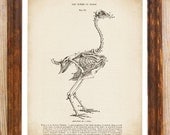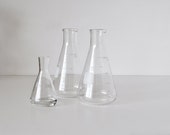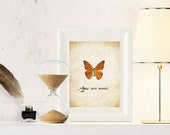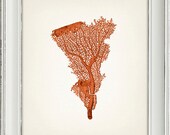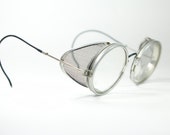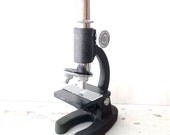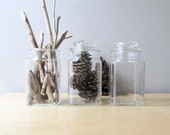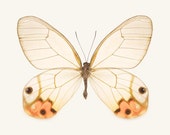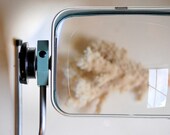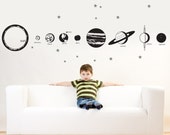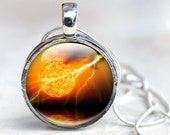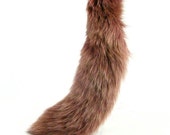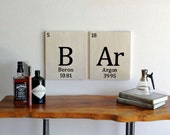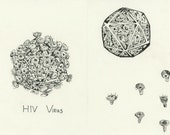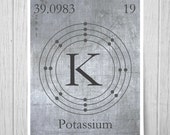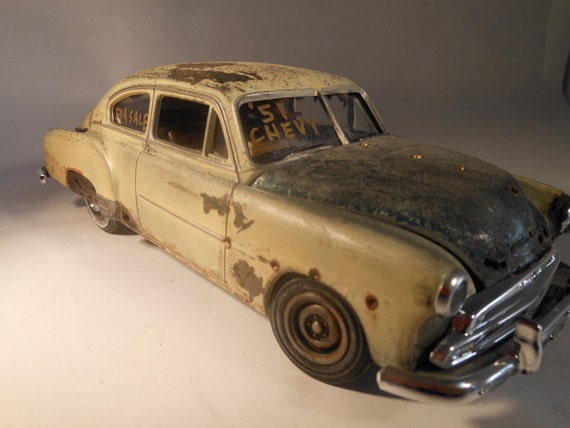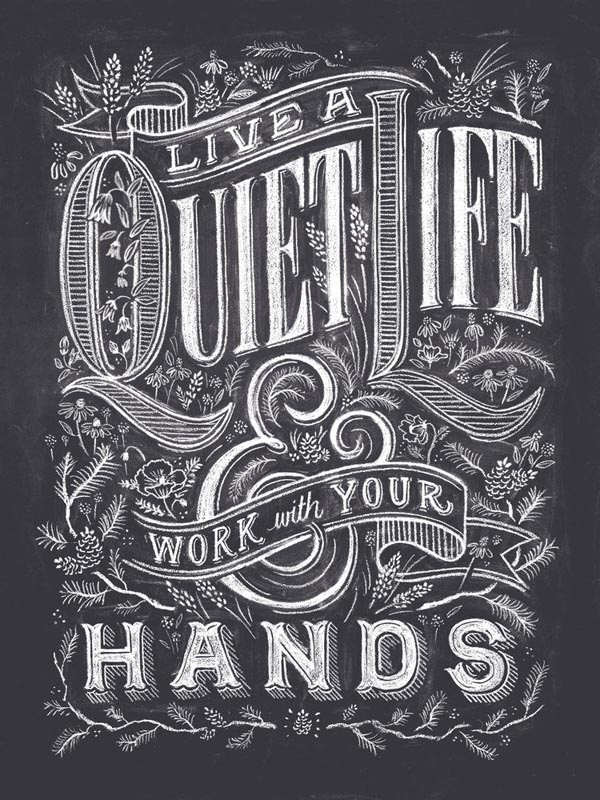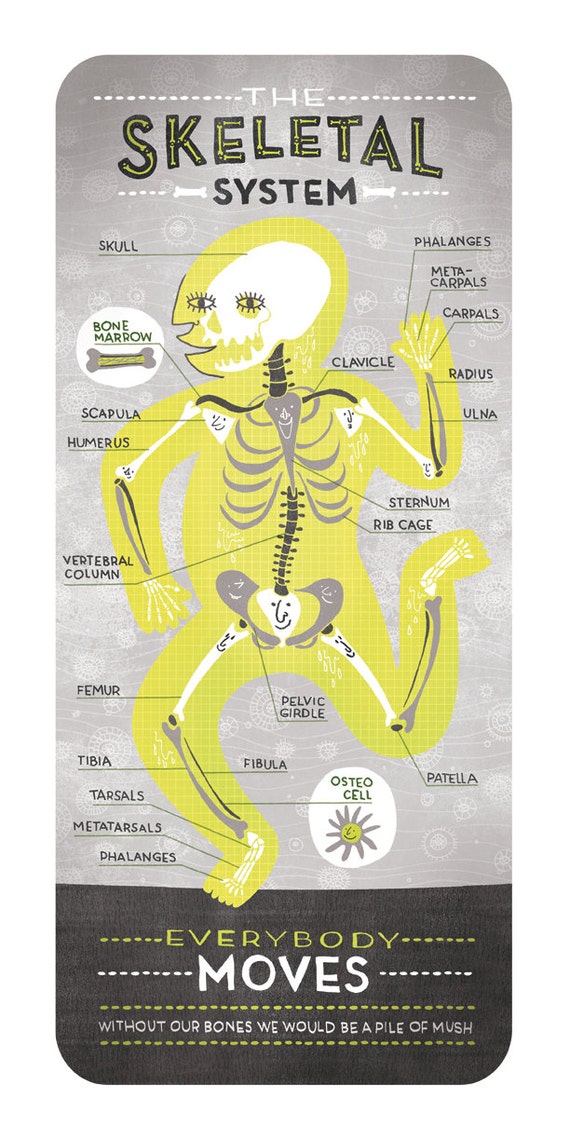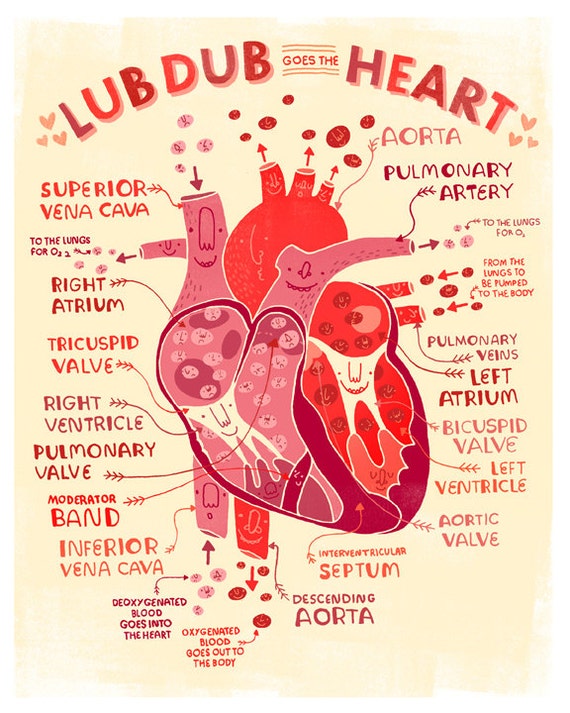Angele Mele is a scientific illustrator. I love her artwork. While looking through Kickstarter, I stumbled across her work. She uses ink, pencil and watercolour. Is all the above just that?
Sunday, 7 December 2014
Slime Molds of the World
Angele Mele is a scientific illustrator. I love her artwork. While looking through Kickstarter, I stumbled across her work. She uses ink, pencil and watercolour. Is all the above just that?
Monday, 9 June 2014
Science Treasury List
"Science is a wonderful thing if one does not have to earn one's living at it." -Albert Einstein
Handmadeology
Wednesday, 23 April 2014
Urban Update
Forest Fauna
This is going to be my logo! It needs some work, of course, I may change the font I use and the picture quality isn't great, as I don't have a proper camera, only the one on my phone, but non-the-less, this is somewhat of a reveal!
I am really pleased with how my elephant magnifying glass is turning out. So far it is my most popular and my favourite as well. As of yet, it needs sanding and is not painted. Finally I have settled on a paint that I would like to use and have found a place relatively nearby that sells it in my area. I will be using milk paint as it is non-toxic and safe for children. It is commonly used with woodworking furniture as it provides an aged look. When I use it with my items, I would like to seal it with some sort of oil, as is traditional. Perhaps walnut or hemp oil. I still need to more thoroughly research that aspect of the process.
About a month ago, I brought some of my work with me to a job interview and I'm soooo happy to say that I got the job!! In September I will be starting my dream job working for the School Board as a Designated Early Childhood Educator in the Kindergarten classroom! I feel incredibly blessed to be given this opportunity so early in my career and am excited to begin. Not before preparing as much as I can in advance though. I have quite a few text books to read through and am meeting with one of my previous teachers to talk things over. She is now the Supervisor of the DECEs for the School Board in my region. She taught me my first class in the program--a very eye opening creative arts class.
Thursday, 17 April 2014
Illuminating Imperfections
Since watching this video, a couple of weeks ago, the principles of this man's work have been on my mind a lot lately.
The video shows the work of John Findra, who creates mini classic car replicas. He looks for old cars in the junkyard or the forest and studies them to make a mini duplicate. What struck me about his process is how he studied and included all of the details of the wrecked cars-- "the shape of the rust hole, how the paint peels, the pattern that the glass makes as its breaking." Each of the cars 'imperfections' were transferred to his replicas and not only gave them character, but made them beautiful.
Here is what he says:
"I think we're in a world now where perfection is so tantament to success. That perfection almost becomes boring. I mean a car in its original state is a man made idea of perfection. But when you take that car and put it out in nature, nature now takes over and creates its own perfection. Nature has its way of reacting to metal and rubber and how the sun works on that car. These are all natural perfections that I am trying to incorporate into my work as an answer to the man made perfection that we see every day."
"[Looking at and taking pictures of old rusted cars] is my field work. Research."
"What I try to do in my models is to tell a story. What happened to that car after somebody left it in the weeds? To rust.. and to decay?"
"What I'm really into now is getting the drip lines down the car. So what I'm going to do is put some colour here and drip it down as if its the rain coming down the body. Now I'll take some silver.. just to give it some subtle irregularity. The gold is terrific because it really does show up in the dark surface. So now you're really getting the feeling of distressed and out in the weather and being uncared for."
"I would say over my lifetime, I must have built thousands of models. I would spend hours shining them, polishing them, and it got boring."
"Probably as a younger man, I wouldn't have been able to accomplish this. In the earlier years, you are reaching for perfection. You want to attain great goals. But as you grow older you become more reflective and you can be imperfect. You can look at things from a different angle. And now I think that in my imperfection, I have created perfection."
I have been transferring these principles to my own art work. Its not about making the subject look perfect, its about capturing the nature of it. Honouring the things that make it imperfect. Sometimes that includes making the piece more about its imperfections than its perfections. What makes it unique? How can I express that? What are the factors contributing to its state? How can I tell its story? Creating a beautiful piece is about including things that at first glance were not important to include and in the end, celebrating those aspects, as they contribute to it's authenticity.
Over the past few months, I have been busy creating items, and have done quite a bit of work in coffee shops, the library, at home, and in the seniors woodworking club (every Thursday). I am waiting to show my items all at once. I have decided on a paint to use, however since it is hard to come by, still need to purchase it. I hope to post my logo soon. My items will be revealed publicly, in sequence, and just as I open my shop. Still lots to do!
The video shows the work of John Findra, who creates mini classic car replicas. He looks for old cars in the junkyard or the forest and studies them to make a mini duplicate. What struck me about his process is how he studied and included all of the details of the wrecked cars-- "the shape of the rust hole, how the paint peels, the pattern that the glass makes as its breaking." Each of the cars 'imperfections' were transferred to his replicas and not only gave them character, but made them beautiful.
1951 Chevy Fleetline; 1/24 size
Here is what he says:
"I think we're in a world now where perfection is so tantament to success. That perfection almost becomes boring. I mean a car in its original state is a man made idea of perfection. But when you take that car and put it out in nature, nature now takes over and creates its own perfection. Nature has its way of reacting to metal and rubber and how the sun works on that car. These are all natural perfections that I am trying to incorporate into my work as an answer to the man made perfection that we see every day."
"[Looking at and taking pictures of old rusted cars] is my field work. Research."
"What I try to do in my models is to tell a story. What happened to that car after somebody left it in the weeds? To rust.. and to decay?"
"What I'm really into now is getting the drip lines down the car. So what I'm going to do is put some colour here and drip it down as if its the rain coming down the body. Now I'll take some silver.. just to give it some subtle irregularity. The gold is terrific because it really does show up in the dark surface. So now you're really getting the feeling of distressed and out in the weather and being uncared for."
"I would say over my lifetime, I must have built thousands of models. I would spend hours shining them, polishing them, and it got boring."
"Probably as a younger man, I wouldn't have been able to accomplish this. In the earlier years, you are reaching for perfection. You want to attain great goals. But as you grow older you become more reflective and you can be imperfect. You can look at things from a different angle. And now I think that in my imperfection, I have created perfection."
I have been transferring these principles to my own art work. Its not about making the subject look perfect, its about capturing the nature of it. Honouring the things that make it imperfect. Sometimes that includes making the piece more about its imperfections than its perfections. What makes it unique? How can I express that? What are the factors contributing to its state? How can I tell its story? Creating a beautiful piece is about including things that at first glance were not important to include and in the end, celebrating those aspects, as they contribute to it's authenticity.
Over the past few months, I have been busy creating items, and have done quite a bit of work in coffee shops, the library, at home, and in the seniors woodworking club (every Thursday). I am waiting to show my items all at once. I have decided on a paint to use, however since it is hard to come by, still need to purchase it. I hope to post my logo soon. My items will be revealed publicly, in sequence, and just as I open my shop. Still lots to do!
Wednesday, 9 April 2014
September Start
A few weeks back I had a job interview with the Ottawa-Carleton District School Board for a position of Designated Early Childhood Educator in the kindergarten classroom.
I got the job!!
Basically it is my dream job and I feel so blessed to be given it so early in my career. I am so excited to start. The last week of August is my start date and so have some time to prepare myself. Just as I prepared for my year teaching in Nicaragua, I will be reading what I can that is relevant to the work I will be doing.
Here are a few quotes I read today from Inquiry into Math, Science, and Technology for Teaching Young Children by Arleen Pratt Prairie:
"Sensory learning contributes to exploratory learning, the first step of inquiry." pg. 74
"For children four to six years of age, several ears of corn are placed in a tray on the discovery table. In addition, magnifiers, measuring cups, a mortal and pestle, and a large rectangle dish lined with white paper are available. These tools invite exploration, such as investigating the husk, the corn, the silk, and the cob. Children shell the corn into the dish and look at the results. To extend these experiences the shelled corn could be examined in the magnifier or measured. Also, the shelled corn can be cut with a paring knife (teacher does this). And corn could be ground with a mortal and pestle. No doubt children will be touching, listening, smelling, shelling, and grinding--even tasting the corn." pg. 83
And the quotes that hit home, while reflecting on the pedagogy of the Reggio Emilia Approach:
"Unfortunately children researching their own questions are usually not taken seriously in the social context. Often the adult takes it upon himself to answer the child's questions with information the adult knows. The result is filling up the child with information. This information given is treated as social knowledge, not physical or logicomathematical knowledge as it truly is (Kamii & DeVries, 1993). The child accepts this information from the adult without question and thus the child believes that the adult is the "container" of knowledge. In believing that all learning stems from the adult, the child abandons his reliance on his own emerging thought processes. This kind of thinking may lead to the lack of autonomous learning (Kamii, 1982)." pg 95
"The teacher's role is to ask good, open ended questions that stimulate children's thinking and provoke discussion... so that children consider the matter at hand with all their attention and interests. In these conversations the teacher does not fish for right answers or impart information. This is clearly a departure from the traditional idea of the teacher's role. (pg 70 of Bringing Reggio Home)" pg 95
And one idea I will be contributing to the ECE/Teacher team environment.
I got the job!!
Basically it is my dream job and I feel so blessed to be given it so early in my career. I am so excited to start. The last week of August is my start date and so have some time to prepare myself. Just as I prepared for my year teaching in Nicaragua, I will be reading what I can that is relevant to the work I will be doing.
Here are a few quotes I read today from Inquiry into Math, Science, and Technology for Teaching Young Children by Arleen Pratt Prairie:
"Sensory learning contributes to exploratory learning, the first step of inquiry." pg. 74
"For children four to six years of age, several ears of corn are placed in a tray on the discovery table. In addition, magnifiers, measuring cups, a mortal and pestle, and a large rectangle dish lined with white paper are available. These tools invite exploration, such as investigating the husk, the corn, the silk, and the cob. Children shell the corn into the dish and look at the results. To extend these experiences the shelled corn could be examined in the magnifier or measured. Also, the shelled corn can be cut with a paring knife (teacher does this). And corn could be ground with a mortal and pestle. No doubt children will be touching, listening, smelling, shelling, and grinding--even tasting the corn." pg. 83
And the quotes that hit home, while reflecting on the pedagogy of the Reggio Emilia Approach:
"Unfortunately children researching their own questions are usually not taken seriously in the social context. Often the adult takes it upon himself to answer the child's questions with information the adult knows. The result is filling up the child with information. This information given is treated as social knowledge, not physical or logicomathematical knowledge as it truly is (Kamii & DeVries, 1993). The child accepts this information from the adult without question and thus the child believes that the adult is the "container" of knowledge. In believing that all learning stems from the adult, the child abandons his reliance on his own emerging thought processes. This kind of thinking may lead to the lack of autonomous learning (Kamii, 1982)." pg 95
"The teacher's role is to ask good, open ended questions that stimulate children's thinking and provoke discussion... so that children consider the matter at hand with all their attention and interests. In these conversations the teacher does not fish for right answers or impart information. This is clearly a departure from the traditional idea of the teacher's role. (pg 70 of Bringing Reggio Home)" pg 95
And one idea I will be contributing to the ECE/Teacher team environment.
Friday, 28 March 2014
England Enchantments
I recently took a bittersweet trip to England. We were in mourning and spending time with family.
The last full day we were there, we went to the coast. My mother noticed the town, Whitby, had many Dracula references, so as I was browsing an antique shop to purchase an antique poison bottle, she asked the shop keeper about it. He explained that author Bram Stoker, inspired by his visit to the town, wrote the story of Dracula. Some tourists look for Dracula's grave near the Abby, not realizing that Vampires don't exist..
It was our day to find little treasures among the shop items. That is where I discovered Wrendale Designs and had to get a card. The shop had beautiful mohair and I regret not getting some, even though I am not a crocheter or knitter.
After eagerly showing my mother, I bought two cards. One for my boyfriend and one for myself.
This is the one I chose for myself because it is adorably cute. I got my boyfriend a Ram.
Here are some other cute ones!
The last full day we were there, we went to the coast. My mother noticed the town, Whitby, had many Dracula references, so as I was browsing an antique shop to purchase an antique poison bottle, she asked the shop keeper about it. He explained that author Bram Stoker, inspired by his visit to the town, wrote the story of Dracula. Some tourists look for Dracula's grave near the Abby, not realizing that Vampires don't exist..
It was our day to find little treasures among the shop items. That is where I discovered Wrendale Designs and had to get a card. The shop had beautiful mohair and I regret not getting some, even though I am not a crocheter or knitter.
After eagerly showing my mother, I bought two cards. One for my boyfriend and one for myself.
This is the one I chose for myself because it is adorably cute. I got my boyfriend a Ram.
Here are some other cute ones!
Sunday, 2 March 2014
Victory Gardens
Lisa Giroday is the co-founder of Victory Gardens in Vancouver. With a background in environmental studies, product development and entrepreneurship, she started her enterprise with Sandra Lopuch and Sam Philips. Through the business, Lisa teaches classes and educates people on how to grow the food you eat and with her team, helps individuals and families build an edible garden.
I love that her and her coworkers wear the same set of overalls as their uniform, love that she drives a motorbike and is married to a former pro snowboarder, and is making it in a male dominated field.
Friday, 21 February 2014
Time for Typography
While browsing Chapters, I strode over to the art section, as per usual. I picked up a book on Typography called "The Little Book of Lettering" and flipped through it. The subject has caught my interest lately as I have been helping my sister to design her wedding invitations. Each double page highlighted the work of a different artist.
Two artists stood out to me. I memorized their names in the store--Dana Tanamachi and Liam Stevens--so that I could look them up when I got home.
DANA TANAMACHI
Dana starts with a blank chalkboard and draws out the rough shape. She erases, draws, erases, draws, erases, draws, until she gets it looking just right. She does a final coat with permanent chalk. Her education is in graphic design and she lives in Brooklyn, New York. Watch her work here, here, and here.
It reminds me of the style of writing at Death Valleys Little Brother, which I posted about back in December.
LIAM STEVENS
Liam is a pencil and paper enthusiast. He is an image maker and designer in London, England.
Two artists stood out to me. I memorized their names in the store--Dana Tanamachi and Liam Stevens--so that I could look them up when I got home.
DANA TANAMACHI
Dana starts with a blank chalkboard and draws out the rough shape. She erases, draws, erases, draws, erases, draws, until she gets it looking just right. She does a final coat with permanent chalk. Her education is in graphic design and she lives in Brooklyn, New York. Watch her work here, here, and here.
It reminds me of the style of writing at Death Valleys Little Brother, which I posted about back in December.
LIAM STEVENS
Liam is a pencil and paper enthusiast. He is an image maker and designer in London, England.
Thursday, 6 February 2014
Perfect Prints
Reading the Etsy blog, I found a Fresh Shop from August 2013 which I had to share. It is called Rachelignotofsky and the article may be found here.
The designer shares my name, love for science, and interest in teaching children!
She has made a whole set of body system prints including nervous, skeletal, respiratory, digestive and cardiovascular systems.
She has prints of the heart, cell contents (plant and animal), and layers of the earth.
If I worked with the school board with kindergarten children (which is my dream) I would totally buy all of these to use with the children! The faces on each item are too cute!
The designer shares my name, love for science, and interest in teaching children!
She has made a whole set of body system prints including nervous, skeletal, respiratory, digestive and cardiovascular systems.
She has prints of the heart, cell contents (plant and animal), and layers of the earth.
If I worked with the school board with kindergarten children (which is my dream) I would totally buy all of these to use with the children! The faces on each item are too cute!
Thursday, 30 January 2014
Wood Carving Clubs
A couple of weeks ago, I set the wheels in motion for my magnifying glass wood carved handle project for Etsy. It will have cat ears and the handle will be the body of the cat.
Although the final product will look more like this (below), and made out of wood.
About two weeks ago, I visited the Grand Valley Woodcarvers Club in Kitchener to talk to some professionals about my project and get an idea of resources out there. When I arrived at the building, after getting a bit lost, I peeked through the windows instead of opening the door. I was suddenly feeling shy. Someone was talking at the front of the room. I later found out that he was giving a biology talk on the owl, which was the bird everyone was carving. Someone else who was late, and said hello to me. I explained to him what I was doing and he invited me in saying "everyone is friendly." I soon found that to be true and once inside was my boisterous self again, chatting with some people at the back.
I met a couple of people. First, Zenon, who was in charge of the club, then Larry, who later would help me with my project more directly, then Zenon's wife, who I chatted with a short time, then Nettie and her friend who both came from the Owls Nest Woodcarving Club which was a little closer to my house, in Waterloo.
I ended up talking to Nettie the longest. She told me that the club I went to that night mostly carved birds, while the other in Waterloo did all kinds of animals (despite their names). She told me of another club in Waterloo, she will introduce me to someone who knows more about that, where there are big tools for woodworking, such as band saws and lathes. That would require a membership fee, but not much. I have yet to go to either of these places.
Today I visited Baden's Woodcarving Club for seniors, because Larry is going to help me on my original design. It was pretty awesome. I arrived with my lunch and sat with three seniors, who shared with me their stories of going to the dentist. One got his tooth pulled 65 years ago for $1 and simultaneously a replacement gold tooth for $25. Another needed his tooth pulled and the tooth had such roots that the dentist had to prop his leg on the chair to pull it out of his mouth with pliers, his head bobbing everywhere and thinking it would come off at the shoulders. Another lady went to the dentist with her classmates once a year in elementary school while she lived in the Czech Republic, as it was different in communist country.
Since I had mindlessly forgotten all my drawings, I had a tour of the place instead. I just about loved it, with all the big rooms and many many machines. I got to see some finished work, as well as work in progress. Some toys, an old fashion milk truck, refinished chairs, a rocking horse, some bowls. Larry showed me everything and all the while I kept thinking "my dad would love this place."
Tomorrow I am returning with my to scale drawings and will have a piece cut out to test carve my first one. I am excited!
Although the final product will look more like this (below), and made out of wood.
About two weeks ago, I visited the Grand Valley Woodcarvers Club in Kitchener to talk to some professionals about my project and get an idea of resources out there. When I arrived at the building, after getting a bit lost, I peeked through the windows instead of opening the door. I was suddenly feeling shy. Someone was talking at the front of the room. I later found out that he was giving a biology talk on the owl, which was the bird everyone was carving. Someone else who was late, and said hello to me. I explained to him what I was doing and he invited me in saying "everyone is friendly." I soon found that to be true and once inside was my boisterous self again, chatting with some people at the back.
I met a couple of people. First, Zenon, who was in charge of the club, then Larry, who later would help me with my project more directly, then Zenon's wife, who I chatted with a short time, then Nettie and her friend who both came from the Owls Nest Woodcarving Club which was a little closer to my house, in Waterloo.
I ended up talking to Nettie the longest. She told me that the club I went to that night mostly carved birds, while the other in Waterloo did all kinds of animals (despite their names). She told me of another club in Waterloo, she will introduce me to someone who knows more about that, where there are big tools for woodworking, such as band saws and lathes. That would require a membership fee, but not much. I have yet to go to either of these places.
Today I visited Baden's Woodcarving Club for seniors, because Larry is going to help me on my original design. It was pretty awesome. I arrived with my lunch and sat with three seniors, who shared with me their stories of going to the dentist. One got his tooth pulled 65 years ago for $1 and simultaneously a replacement gold tooth for $25. Another needed his tooth pulled and the tooth had such roots that the dentist had to prop his leg on the chair to pull it out of his mouth with pliers, his head bobbing everywhere and thinking it would come off at the shoulders. Another lady went to the dentist with her classmates once a year in elementary school while she lived in the Czech Republic, as it was different in communist country.
Since I had mindlessly forgotten all my drawings, I had a tour of the place instead. I just about loved it, with all the big rooms and many many machines. I got to see some finished work, as well as work in progress. Some toys, an old fashion milk truck, refinished chairs, a rocking horse, some bowls. Larry showed me everything and all the while I kept thinking "my dad would love this place."
Tomorrow I am returning with my to scale drawings and will have a piece cut out to test carve my first one. I am excited!
Wednesday, 22 January 2014
Writing Workshop
This evening I went to a beginner writers workshop. Susan Fish, author of Seeker of Stars, presented the information lively. Here are the notes I took.
Suggestions:
It takes 10 000 hours to be really good at something. Practice writing using writing prompts. Make a list of your favourite adjectives and then put them in a jar. Each day, pull one or two out and write something with them. Sometimes you need to paint cornfields over and over. Write a side passage from a book of fiction (Pride and Prejudice and Zombies type thing). Find a subject you care about. Don't get too comfortable. Don't play it safe. Its good to make a writing date and time. Keep that appointment just like you would any other. Find how you work the best (Computer, Graph paper, Blank paper, lined paper, Notebooks, etc.). Use a soundtrack. Take a trip one weekend. Write in the bathtub. Write while standing up. Write while laying down. Anything that makes it easier to start and continue! Read, read, read and cross-pollinate. Go to lectures. Lead a rich life. Creativity is having great ideas, figuring out how to do it, and then doing it. Learning new words. Use dictionaries. Work on the craft. Use verbs well. Choose your details. Follow your energy. Reward yourself for finishing. Find a community of support. Follow an agent on Twitter.
Quotes:
"If I had to say what writing is, we would define it essentially as an act of courage." Cynthia Ozick
"Start writing. No Matter what.
The water doesn't flow until the tap is turned on." Louis L-Amour
"Be willing to write a shitty first draft" Anne Lamott
"No tears in the writer, no tears in the reader. No surprise in the writer, no surprise in the reader." Robert Frost
Recommended Reading:
The Joy of Writing by Pierre Burton
Our Town by Thornton Wilder (Play)
Making a Literary Life by Carolyn See
The Little Prince by Antoine de Saint-Exupery
Suggestions:
It takes 10 000 hours to be really good at something. Practice writing using writing prompts. Make a list of your favourite adjectives and then put them in a jar. Each day, pull one or two out and write something with them. Sometimes you need to paint cornfields over and over. Write a side passage from a book of fiction (Pride and Prejudice and Zombies type thing). Find a subject you care about. Don't get too comfortable. Don't play it safe. Its good to make a writing date and time. Keep that appointment just like you would any other. Find how you work the best (Computer, Graph paper, Blank paper, lined paper, Notebooks, etc.). Use a soundtrack. Take a trip one weekend. Write in the bathtub. Write while standing up. Write while laying down. Anything that makes it easier to start and continue! Read, read, read and cross-pollinate. Go to lectures. Lead a rich life. Creativity is having great ideas, figuring out how to do it, and then doing it. Learning new words. Use dictionaries. Work on the craft. Use verbs well. Choose your details. Follow your energy. Reward yourself for finishing. Find a community of support. Follow an agent on Twitter.
Quotes:
"If I had to say what writing is, we would define it essentially as an act of courage." Cynthia Ozick
"Start writing. No Matter what.
The water doesn't flow until the tap is turned on." Louis L-Amour
"Be willing to write a shitty first draft" Anne Lamott
"No tears in the writer, no tears in the reader. No surprise in the writer, no surprise in the reader." Robert Frost
Recommended Reading:
The Joy of Writing by Pierre Burton
Our Town by Thornton Wilder (Play)
Making a Literary Life by Carolyn See
The Little Prince by Antoine de Saint-Exupery
Sunday, 19 January 2014
Three Types of Thinking
Over the last few weeks I have been developing and expanding ideas for my Etsy shop! I have decided to make childrens science toys.
I have been reading Inquiry into Math, Science, and Technology for Teaching Young Children by Arleen Pratt Prairie. It talks about three different types of thinking that children engage in with their day to day explorations and activities. These three types of thinking are physical knowledge, logicomathematical knowledge, and social knowledge.
Physical knowledge depends on the "cognitive processes experienced as children act on objects." For example, if a child has a group of shells, he will do various things to the shells to gain knowledge about it. He feels the shape and smoothness, clinks them together, drops them on the table, maybe drops them in water. He is learning the shape, texture, and sounds that the object makes.
Logicomathematical knowledge is created when the child "makes relationships between and among objects." The child compares shells to each other. She classifies them into groups that look alike, examining their groves in comparison to each other, and manipulating and considering relationships in her mind.
Social knowledge is "knowledge shared by people." Those around him call the item concha in Spanish or shell in English. Counting the shells is something socially communicated as well as the names of the numbers themselves. "The decision that we should turn sea creatures back to the sea is also social knowledge. The distinction of social knowledge is that it comes from people, not from the objects themselves."
I have been reading Inquiry into Math, Science, and Technology for Teaching Young Children by Arleen Pratt Prairie. It talks about three different types of thinking that children engage in with their day to day explorations and activities. These three types of thinking are physical knowledge, logicomathematical knowledge, and social knowledge.
Physical knowledge depends on the "cognitive processes experienced as children act on objects." For example, if a child has a group of shells, he will do various things to the shells to gain knowledge about it. He feels the shape and smoothness, clinks them together, drops them on the table, maybe drops them in water. He is learning the shape, texture, and sounds that the object makes.
Logicomathematical knowledge is created when the child "makes relationships between and among objects." The child compares shells to each other. She classifies them into groups that look alike, examining their groves in comparison to each other, and manipulating and considering relationships in her mind.
Social knowledge is "knowledge shared by people." Those around him call the item concha in Spanish or shell in English. Counting the shells is something socially communicated as well as the names of the numbers themselves. "The decision that we should turn sea creatures back to the sea is also social knowledge. The distinction of social knowledge is that it comes from people, not from the objects themselves."
Saturday, 4 January 2014
Painting Partisan
For the last week, I have been mulling over ideas for an Etsy shop and think I have found the perfect one. Now, one of the items I would like to make involves a series of paintings. Today I decided what medium to use: watercolours.
The reason watercolour above the others is that, I recently discovered that oil paint is actually toxic and so is not very good to breath all the time. Since I am so health conscious, it was not a good choice for me. I also felt that my oil brushes just didn't get small enough.. I think there would be other tools I could try, though it led me onto another type of paint consistency.
Watercolour is what my Granny Pam used for almost all of her life. She sold her paintings and entered many competitions, in which she often got top place. My house growing up had one of her paintings of a sunflower and the months of the year. My mother wrote family and close friends birthdays on it before laminating the whole thing. It was a central part of the kitchen.
One of my fondest memories of my Granny Pam was when she taught me how to knit in the backyard of our house. I must have been about 5 or 6.My mother used to tell me that she thought watercolour showed the most skill in painting because unlike oil and acrylics, a mistake could not be coloured over.
Another reason watercolour appeals to me is that two of my favourite painters use it: John James Audubon and Walton Ford. I admire both of their subject and skill immensely and would like to paint animals as well.
That is why I attempt to study their techniques.
The reason watercolour above the others is that, I recently discovered that oil paint is actually toxic and so is not very good to breath all the time. Since I am so health conscious, it was not a good choice for me. I also felt that my oil brushes just didn't get small enough.. I think there would be other tools I could try, though it led me onto another type of paint consistency.
Watercolour is what my Granny Pam used for almost all of her life. She sold her paintings and entered many competitions, in which she often got top place. My house growing up had one of her paintings of a sunflower and the months of the year. My mother wrote family and close friends birthdays on it before laminating the whole thing. It was a central part of the kitchen.
One of my fondest memories of my Granny Pam was when she taught me how to knit in the backyard of our house. I must have been about 5 or 6.My mother used to tell me that she thought watercolour showed the most skill in painting because unlike oil and acrylics, a mistake could not be coloured over.
Another reason watercolour appeals to me is that two of my favourite painters use it: John James Audubon and Walton Ford. I admire both of their subject and skill immensely and would like to paint animals as well.
That is why I attempt to study their techniques.
Walton Ford
Subscribe to:
Comments (Atom)

